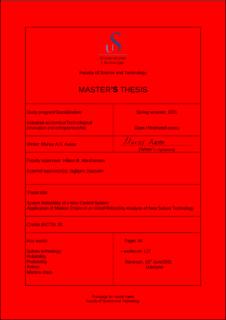| dc.description.abstract | One challenge related to subsea oil operations is wax deposition on the oil pipeline. The problem arises when hot crude oil comes in contact with a cold pipeline. The paraffin wax, present in hot crude oil, crystallizes and builds up from the pipeline wall and inwards. Subsea 7 is now developing a new mechanical solution to deal with wax deposition; the Wax Control System (WCS). In a WCS, a cleaning pig flows with the oil inside the pipeline. While the oil is cooled down to ambient temperature before further exportation, the pig removes any wax present on the pipeline wall.
This thesis uses the WCS as a case to study the usefulness of the Markov chain as a tool in the reliability analysis of new subsea equipment. Two objectives are made to answer this. The first objective is to analyse two different possible configurations of the WCS in light of costs, availability, and maintainability using Markov chains. The second objective is to discuss if and how Markov chains fit as an analysis tool for components under conditions not generally discussed in reliability literature. More specifically, a case where one component in a system is non-stationary, and a case where a component's availability might depend on another component's lifetime. For these components, existing tools might fall short. The research question is then: \textit{How do Markov chains fit as a tool in the initial reliability analysis of complex components in a new subsea system?}
In short, the results suggests that the use of Markov chains in reliability analysis can add a degree of overview of a subsystem, mostly because of the transition graphs. Further, compared to an existing method used to calculate availability, the use of Markov chain theory can open up to more detailed and flexible analyses.
Even though the use of the Markov chain can open up for flexibility and more detailed analyses, there are some drawbacks. When using Markov chains, it is assumed that, for instance, failure, repair, and wear are exponentially distributed. This assumption might, however, not hold in practice. Many components' failure rate is not necessarily constant. Also, finding these rates can be quite challenging. Existing tools within risk and reliability also have some drawbacks when analysing a non-stationary component in a system. | |
